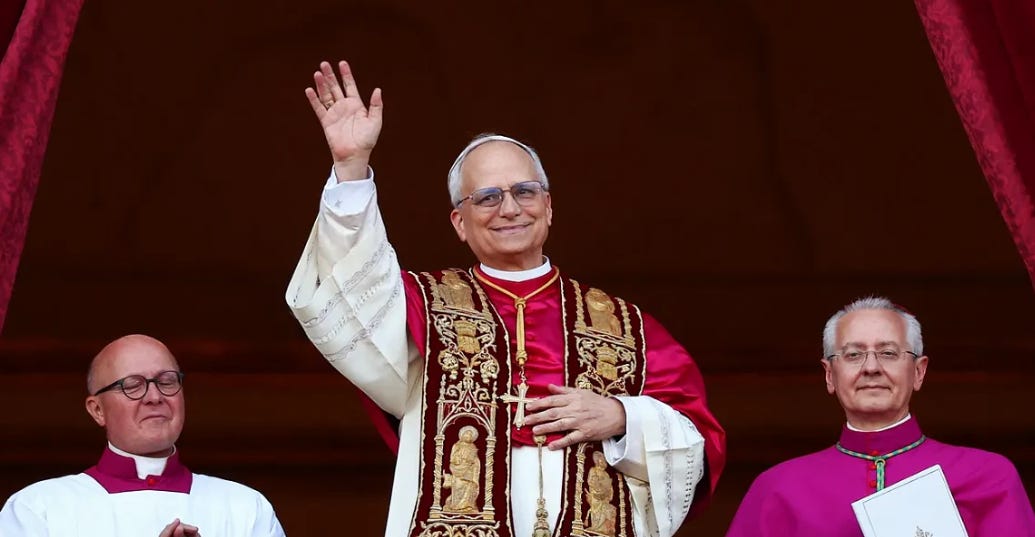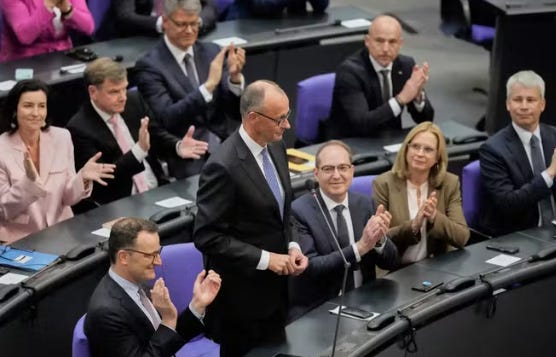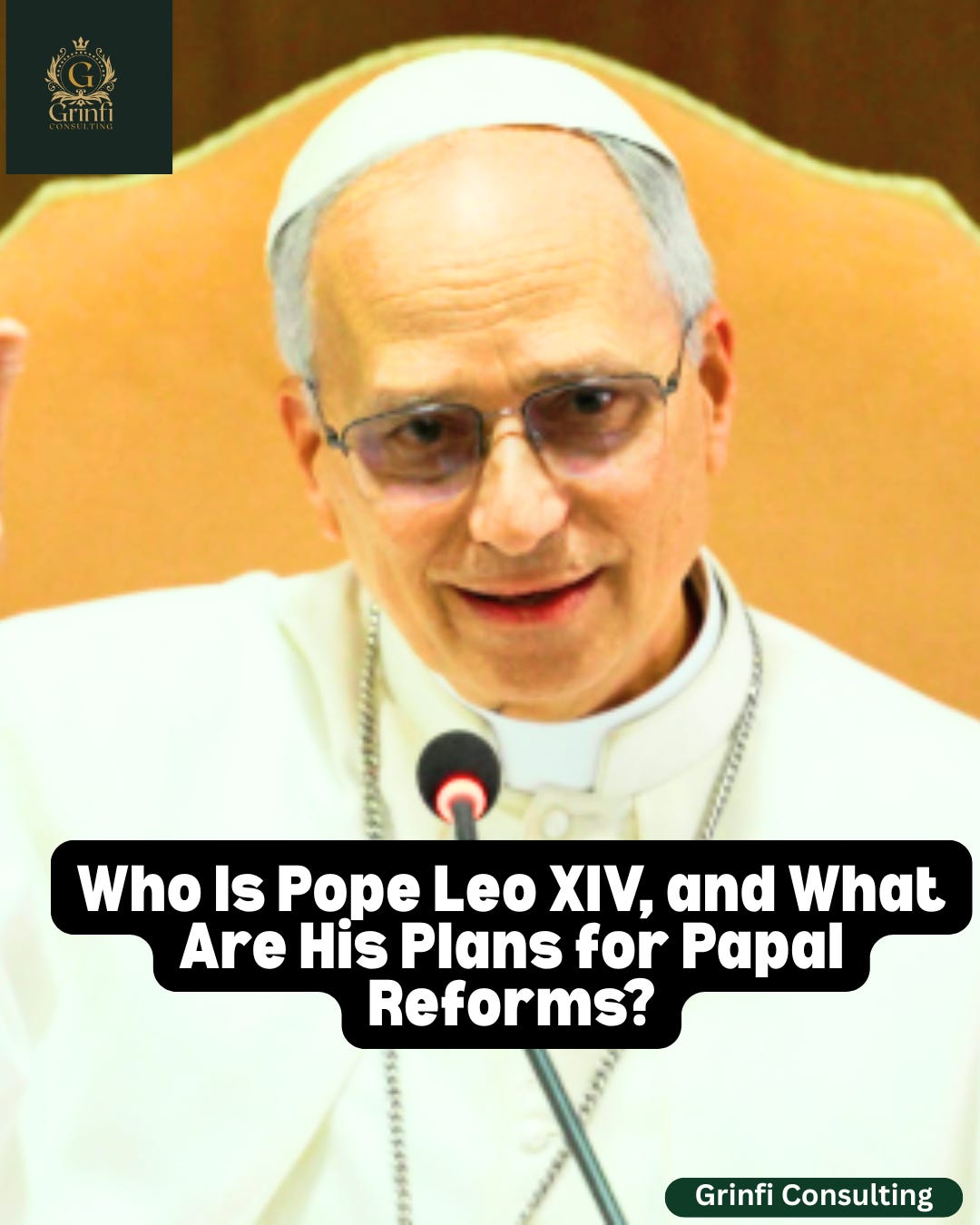First North American Pope Elected, India-Pakistan Ceasefire Collapses, US and China Meet in Switzerland for Trade Talks, Zelensky and Putin to Engage in Direct Talks in Istanbul, and More
Grinfi Political Risk Intelligence Weekly Briefing
Welcome to this week’s edition of Grinfi Political Risk Edge, your trusted source for expert political risk analysis and strategic intelligence. In this issue, we examine key geopolitical events shaping the defense, energy, and DeFi markets, providing a deep, beyond-the-headlines assessment. Anticipate, Adapt, and Excel!
But first, let’s begin the week with a laugh 😄 to brighten the mood.
Help us serve you better and improve Grinfi Political Risk Edge by taking this brief, fully anonymized reader survey.
"Human law has the nature of law only in so far as it accords with right reason; and thus it is clear that it derives from the eternal law. In so far as it deviates from right reason it is called an unjust law; in such case it is no law at all, but rather a species of violence."
Thomas Aquinas, Summa Theologiae. Translated by the Fathers of the English Dominican Province. New York: Benziger Bros., 1920. I-II, Q. 93, Art. 3, Reply 2. https://www.newadvent.org/summa/2093.htm.
Disclaimer: The opinion expressed in this quote does not represent our views but is intended for reflection purposes only.
From Grinfi Political Risk Observatory (GPRO), here’s what we’re monitoring:
High Impact Situational Updates
MAJOR HEADLINES
— Conservative Leader Friedrich Merz Elected Chancellor of Germany
On May 6, Friedrich Merz, leader of the Christian Democratic Union (CDU), was elected Germany’s Chancellor in a second round of parliamentary voting in the Bundestag, securing 325 votes, nine above the required 316-vote majority. The secret ballot election saw a historic first-round setback, marking the first time in the history of the modern Federal Republic of Germany that a chancellor candidate failed to win on the initial vote. Merz received 310 votes in that round, falling short by six due to at least 18 defections from his CDU/CSU–Social Democrat (SPD) coalition, which holds 328 seats. Several sources attributed the defections to internal tensions over Merz’s fiscal reform agenda, which permits increased borrowing to fund defense and infrastructure projects aimed at countering U.S. tariffs and Russian aggression.
Sworn in by President Frank-Walter Steinmeier, Merz appointed a 17-member cabinet and retained the SPD’s Boris Pistorius as Defense Minister. On May 7, Chancellor Merz visited Paris and Warsaw, where he met with French President Emmanuel Macron and Polish Prime Minister Donald Tusk to reinforce European unity.
On May 10, he announced that Germany would no longer publish detailed lists of military aid to Ukraine, including the quantity and type of weapons provided, in order to maintain “strategic ambiguity” and hinder adversaries’ ability to track German equipment and supply chains. Speaking during a visit to Kyiv with other members of the Coalition of the Willing, Merz stated, “Under my leadership, the debate about arms deliveries, caliber, weapons systems, and so on will be taken out of the public eye.”
— First North American Pope Elected, Pledging a Renewed Vision and Ecclesiastical Approach for a New Industrial Revolution
On May 8, the College of Cardinals elected 69-year-old Robert Francis Prevost, a Chicago-born missionary, as the 267th pope, making him the first North American to lead the Catholic Church. Taking the name Leo XIV, he emerged after four ballots in a two-day conclave.
An Augustinian with dual U.S.-Peruvian citizenship, Prevost drew inspiration for his papal name from Pope Leo XIII, whose 1891 encyclical Rerum Novarum confronted the social challenges of the Industrial Revolution, advocating for workers' dignity and balanced economic systems. In his May 10 address to the cardinals, the new pope, Leo XIV, framed the current era as a 'new industrial revolution' driven by artificial intelligence (AI), which he described as a transformative force requiring moral guidance to prevent harm to human dignity, labor, and justice.
Pope Leo XIV's papal vision centers on advocating for an ethical AI that serves humanity rather than exploiting it. He has already called for global cooperation to establish transparency in AI development, warning that unchecked technology could widen inequality and erode spiritual values. Rooting his approach in faith, he urged Catholics to approach AI with prayerful discernment, viewing faith as a guiding light in a world often swayed by materialism and power. His reform agenda builds on the Second Vatican Council’s call for a missionary Church and Pope Francis’s emphasis on synodality, advocating for inclusive leadership that empowers local churches while maintaining doctrinal clarity. He pledged to advance Francis’s legacy of simplicity and outreach to the marginalized, envisioning a Church that engages the modern world without compromising its spiritual core.
On May 9, during a Mass in the Sistine Chapel, Leo XIV stressed unity and evangelization in societies where faith faces skepticism. The following day, he visited a sanctuary linked to his Augustinian order and prayed at Francis’s tomb. World leaders have lauded his global perspective, offering their congratulations, though cautiously. However, some MAGA voices expressed discontent over Prevost’s earlier X posts, which included retweeting critiques of political figures, including that of U.S. Vice President JD Vance.
Still, the phenomenon of the conclave, particularly Prevost’s unexpected rise to the papacy, illustrates how interdisciplinary academic rigor, when applied through modeling, can provide valuable insights and sometimes accurate predictions.
So how did Prevost, widely seen as a dark horse, emerge as the elected pope?
In a study titled "In the Network of the Conclave," three researchers from Bocconi University in Italy, Giuseppe Soda, Alessandro Iorio, and Leonardo Rizzo, applied social network analysis to model and predict the outcome of the papal conclave with remarkable accuracy.
The results were published days before the outcome of the conclave on May 8.
In the study, they reconstructed what they described as a Vatican network, using three main data sources: formal institutional ties (such as shared membership in curial bodies, councils, and academies), lines of episcopal consecration (which form strong ties of loyalty based on who ordained whom), and informal relationships based on ideological affinities, mentorship, and patronage, drawn from authoritative journalistic sources. By layering these together, they created the first full systemic map of the College of Cardinals.
From that structure, they identified three variables as key to prominence in the Church’s internal power dynamics: status, defined as connection to other highly influential members (eigenvector centrality); information control, meaning those who act as bridges between otherwise disconnected groups (betweenness centrality); and






